Table of Contents
Linguaskill Speaking
Ahh, speaking. Is it harder than writing because you have no time to think? Well, that's not the case with the Linguaskill speaking section as you do have time to think in some tasks. However, in other tasks you don't have time to think and this scares the Bee Gees out of many students! 'Scaring the Bee Gees' out of somebody isn't a real saying, I just made it up. Classic band though, let's listen to a song:
Write a comment at the bottom of this page and let me know if speaking in English scares the Bee Gees out of you 😉 Fever night, fever night, fever...right let's continue.
Linguaskill Speaking Format
Have you seen my Linguaskill page going through format of the whole Linguaskill test? If you have, you'll probably remember that there are 5 different exercises/parts in the Linguaskill Speaking section.
Linguaskill Video: the video below is available for paid members only.
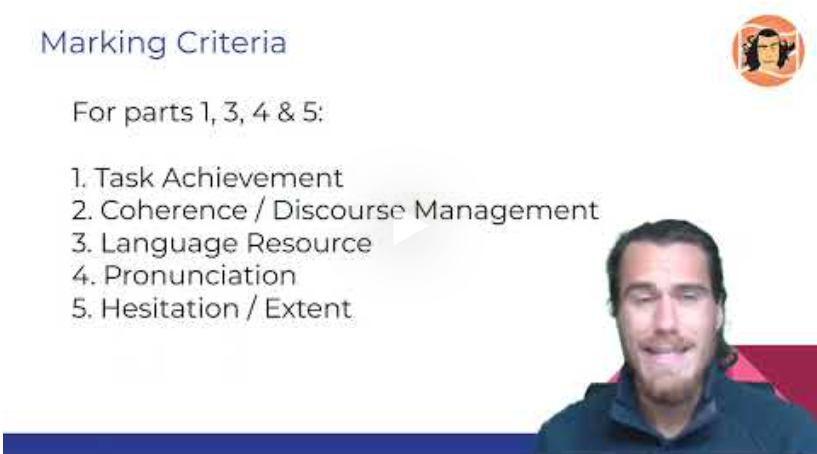
To access all of these videos register here >>
I'll summarise the most important information from that page for you again here:
The total paper length: 15 minutes
How many parts: 5
Marking criteria for parts 1, 3, 4, 5: Task Achievement, Coherence / Discourse Management, Language Resource, Pronunciation, Hesitation / Extent.
Marking criteria for part 2: Overall Intelligibility, Individual Sounds, Stress, Rhythm and Intonation.
Make sure you have a good understanding of these criteria before the exam. You can read more about them here:
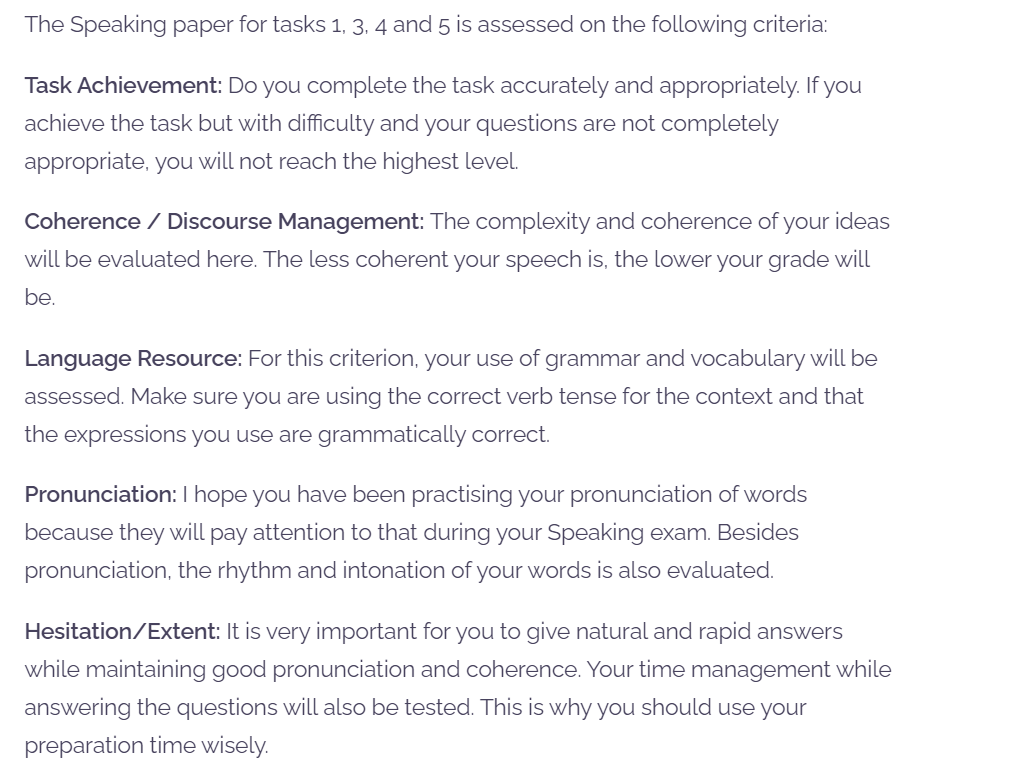
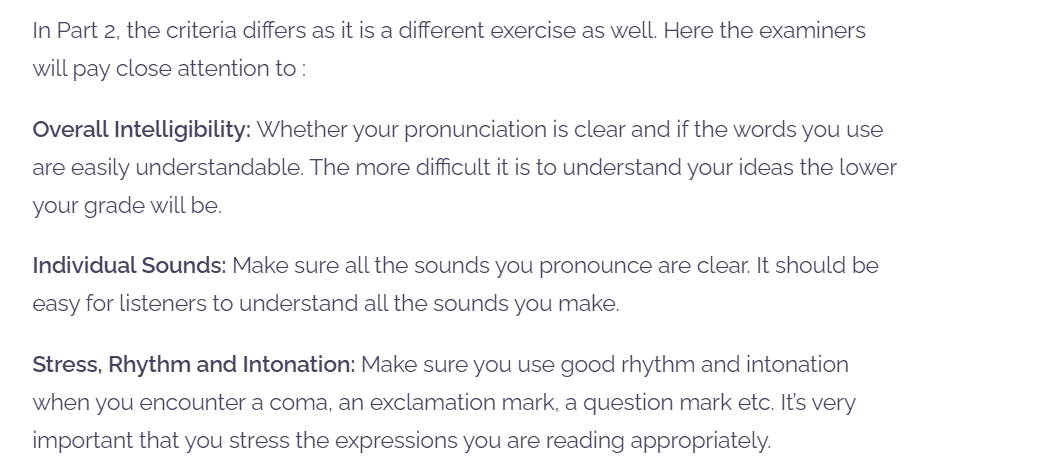
Before we continue, I thought I should mention that I've published a book which contains lots of information about this exam:
Speaking Part 1: 'Interview'
Interview Format:
You answer some general questions about yourself in the first 'interview' part of Linguaskill speaking.
When I did a practice test, I was asked the following questions:
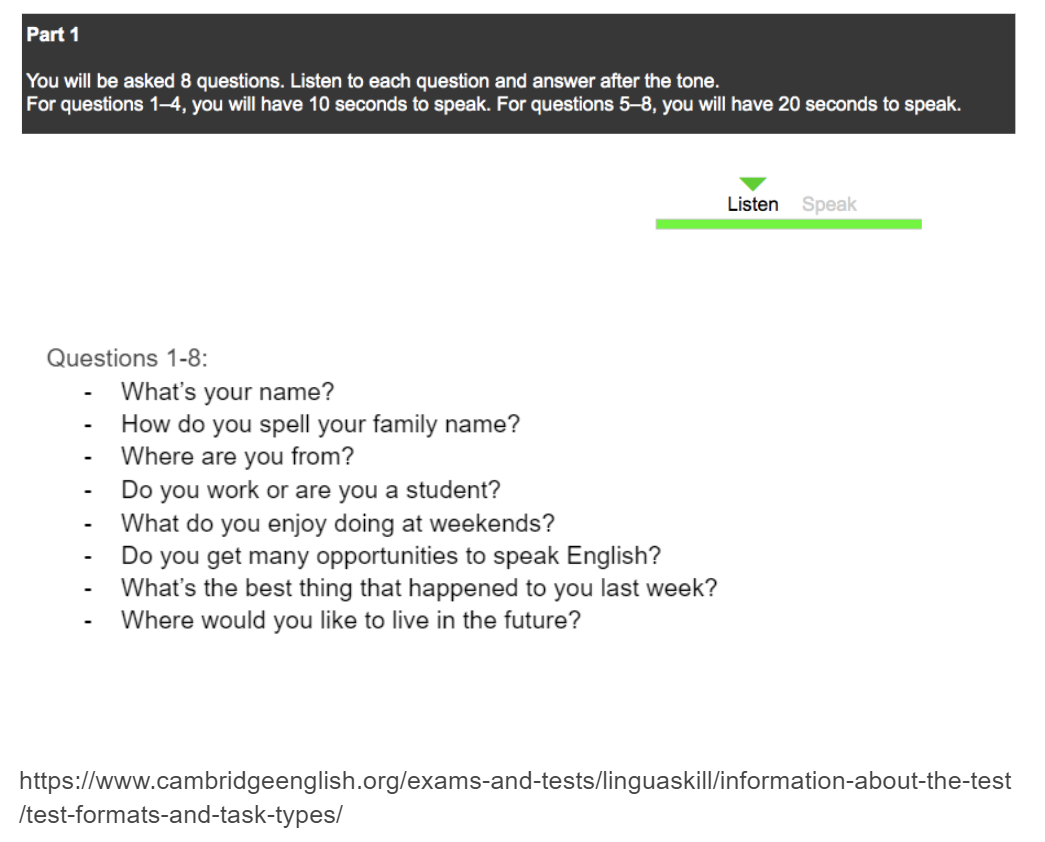
Linguaskill Speaking Part 1 Tip:
For this first part of the speaking you don’t need as much preparation as for other parts of the test. However, there are a few things I recommend doing before the exam.
1. Think about what hobbies you have and what you like to do in your free time. These are topics that will probably be asked during the 'Interview'.
2. Prepare some answers to these types of questions and record yourself saying your answers. This will really help you improve your answers and tick the examiner marking criteria boxes. Remember, in part 1 of the speaking section you will have only about 2 or 3 seconds before you start speaking, so no preparation time will be given.
These will help you to complete the following technique...
Interview Technique:
- As you can see you don’t have much time to speak, only 10/20 seconds, which means you are not required, at this point, to give very detailed answers. However, make sure you use most of the 10/20 seconds, do not stay in silence for too long while the clock is running.
- To make sure you speak for a suitable length of time, you can add something extra to your answers. For example, with the question ‘where are you from?”, you shouldn’t simply say ‘I’m from Spain’ as this will take you only 2 seconds. Alternatively, you should add a small detail about the city and country you’re from. For example, you can answer something like this: ‘I’m from Elche, a city in Spain where you can find the biggest palm grove in Europe, which is considered a world heritage site by UNESCO’.
- You should speak at a steady pace and as clearly as possible. We naturally speak more quickly when we're nervous, so don't worry about taking your time.
'Interviews' are a typical way to start many English speaking tests. They are really designed to get the candidate (you) feeling more comfortable. If you'd like to see loads more examples of 'Interview' questions, you should check out my B2 speaking part 1 and C1 speaking part 1 pages. While these are for different exams, you will see the questions are very similar and you can adopt some really useful ideas!
Speaking Part 2: 'Reading Aloud'
Speaking Part 2 (Reading Aloud): Format:
In this part you will see 8 sentences which look like this:
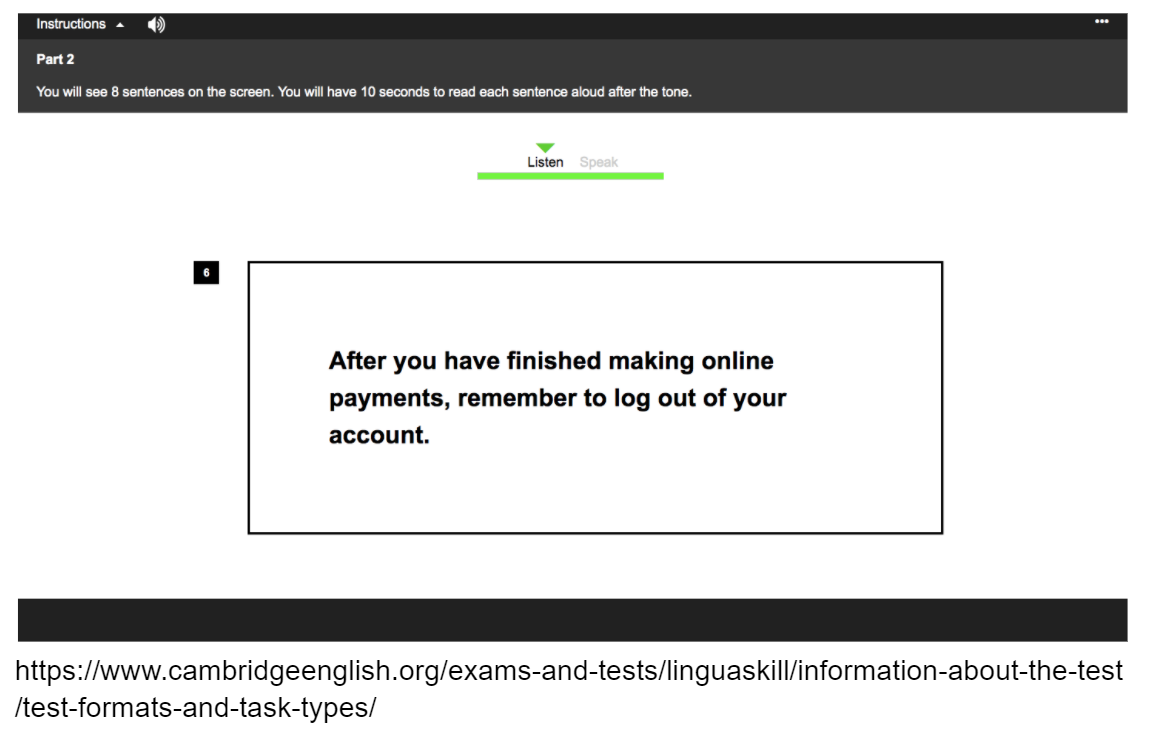
You need to read these sentences out loud.
Speaking Part 2 (Reading Aloud): Technique:
- Create a quick routine you use at the beginning of each part of the exam. This could be as simple as counting "1,2,3,4, 1,2,3,4" twice. The reason for this routine is to make you focus on the exam and prepare yourself for the section you are about to face.
- In part 2, the same as part 1, you will not have any preparation time. This means that when the sentence you need to read comes up the time will start counting right away. As you only have 10 seconds for each sentence you read, I don't recommend reading it in your head first. However, I do recommend practising reading similar sentences before the exam. You should record and critique yourself. You could practise copying the pronunciation, word and sentence stress from some of my dictation videos here >> Alternatively, if you are a member, you can practise this part of the exam in my Telegram groups!
- In the exam, make sure you read each sentence calmly and clearly.
- Pay attention to the stress and pronunciation of words as well as the rhythm of the sentence.
Linguaskill Tip: this is available for paid members only.
There are many tips, exercises and homework exercises throughout all the pages and the videos. So, if you want to prepare effectively, you should watch and complete all of them!
To access all of these, register here >>
Linguaskill Speaking Part 3: Long Turn 1 'Presentation'
Linguaskill Video: the following video is for paid members only.
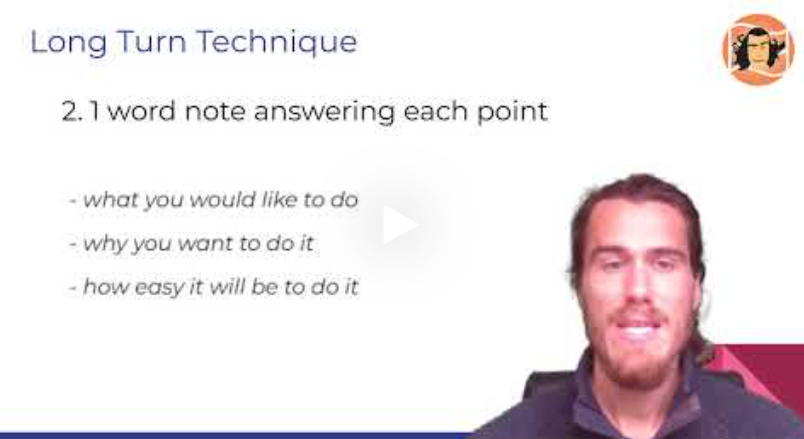
To access all of these videos register here >>
Speaking Part 3 - Long Turn 1 (Presentation) Format:
In this part you will need to speak about a topic for 1 minute. You will have 40 seconds to prepare your response. The task looks like this:
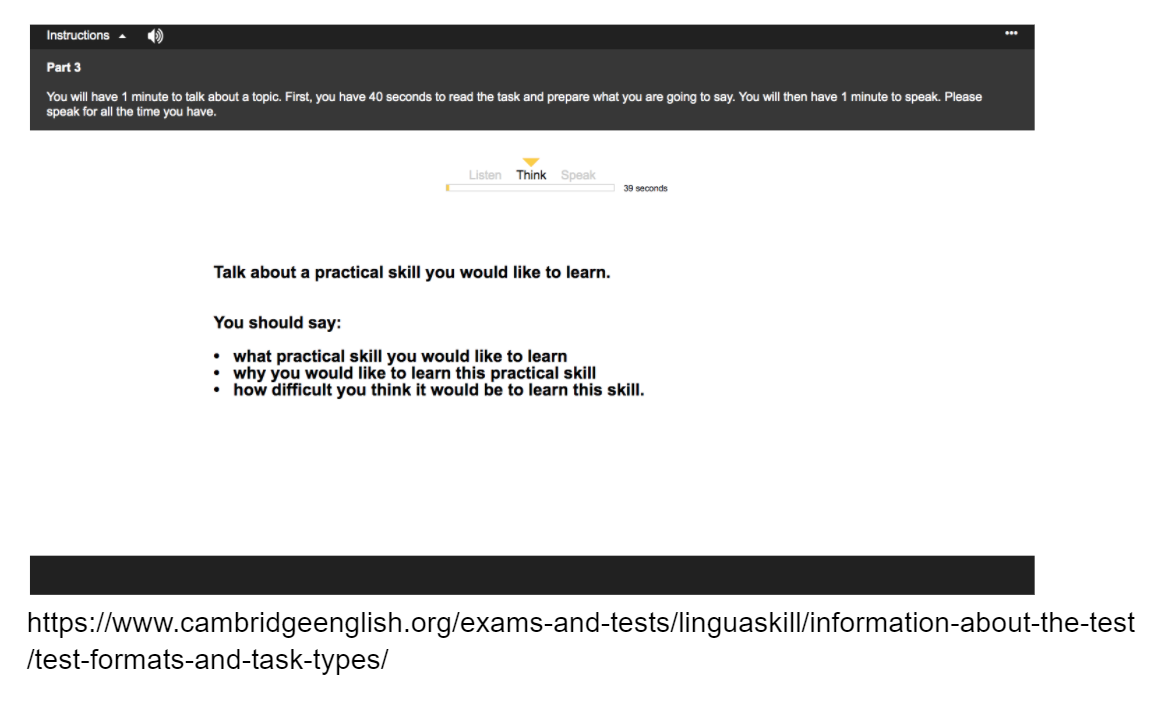
Speaking Part 3 - Long Turn 1 (Presentation): Technique:
- Here you should follow the same logic as you learnt for the Linguaskill writing exercises. Take the preparation time to read through the topics (bullet points) that you need to mention.
- Structure, on paper (if you believe you have time for that) or in your head the answer to each point. Practise this before the exam to see if you have time to write an answer for each point (it's unlikely). Remember, members can practise these exercises with me in my Telegram groups >>
- You should not try to prepare a full speech as you will not have time and it is not what’s expected. You are expected to use the preparation time to think and structure what you will say but your speech should not sound rehearsed.
- During your answer, think about the topics and what you thought you could mention for each topic and put the speech together as the time goes. It’s very important that you keep track of time while you’re speaking. You want to make sure you have time to answer all the points that are expected of you. Try to allocate equal time to each of the points. The best way to do this is by practising beforehand. Again, practise in exam conditions with a timer so you know when you should move on to the next topic.
Speaking Part 4: Long Turn 2 'Presentation with visual information'
Speaking Part 4 - Long Turn 2 (Presentation with visual information) Format:
This part is very similar to part 3. The difference is you will see a picture or diagram and you can prepare for slightly longer (1 minute). Again, you need to speak for 1 minute. Let's look at an example:
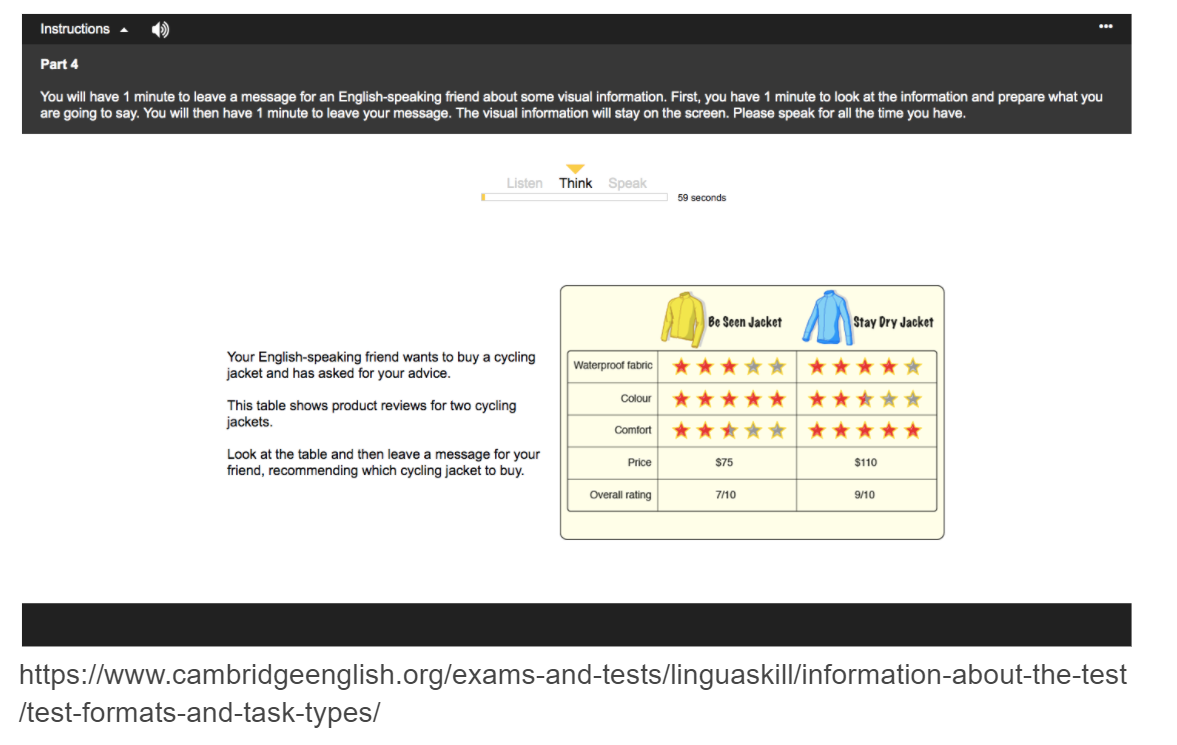
Speaking Part 4 - Long Turn 2 (Presentation with visual information): Technique:
- Here you will have to pay attention not only to the questions and the written information, but also to the graph or other visual information that is presented to you. Make detailed notes before you start speaking so you don't go blank when speaking. Try to structure your notes. Structuring beforehand will help you make sure you refer to all the information you are asked to provide.
- Memorise a first phrase that you can say, for example: "I could talk about...but I think I'll start by mentioning..."
- Remember, we talk quicker when we're nervous, so it's a good idea to practise talking slowly and steadily.
- Keep talking even if you run out of ideas. You should try and fill up the total talking time because the more you talk, the more language you can show.
You can practise similar exercises from similar exams on my FCE speaking part 2 and CAE speaking part 2 pages.
3 extra Linguaskill tips: these are available for paid members only.
If you want to access all these tips and more, register here >>
Linguaskill Speaking part 5
Speaking Part 5 Communication Activity Format:
In the final part of the Linguaskill speaking section, you will need to answer 5 questions about 1 topic. The questions will normally ask for your opinion about something. You will have 40 seconds to read about the topic before you hear the first question. After each question you have 20 seconds to give your answer and you should try to use all this time. Here is an example part 5 topic with questions:
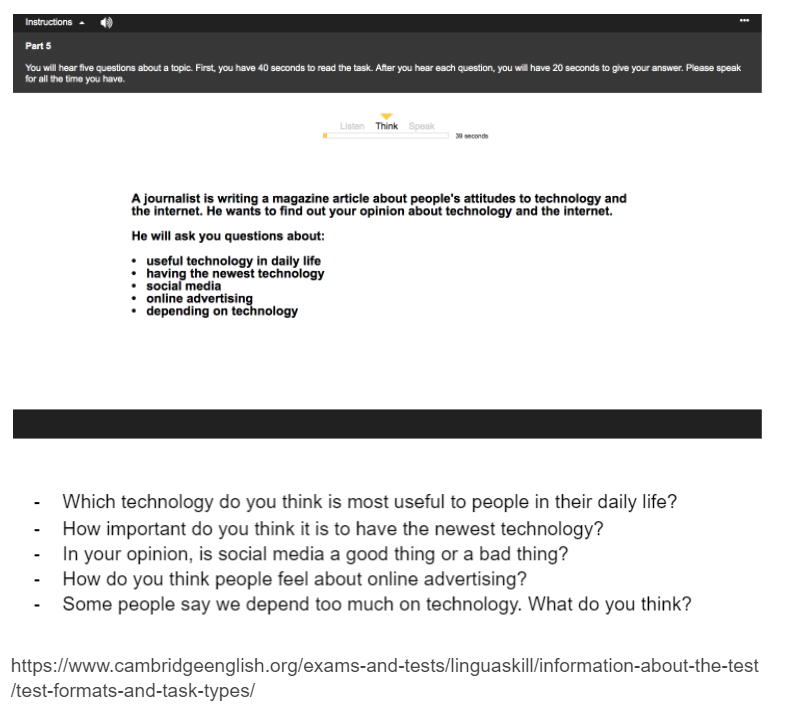
Speaking Part 5 Communication Activity Technique:
- This exercise is similar to Speaking part 3 Long Turn (Presentation) however in this case you will not know beforehand which questions will be asked. This does not mean you will not be able to prepare. You can see the points on which the questions will be based. Take the preparation time to read through those topics.
- Think about each point, try to think what question they could ask about it and write down a couple of words for each point. This will help give you an idea in your head for what you could say and a possible answer to the question. Don't try to prepare a full speech as you will not have time and it is not what’s expected.
- During your answer look at the words you wrote down and what you thought you could mention for each point.
- Put your speech together as the time passes and remember, try to speak for the full 20 seconds!
Extra Linguaskill tip: this is available for paid members only.
If you want to access all these tips and more, register here >>
Next Page >>
If you'd like to access the links below and learn techniques for all the other parts of the exam, Register Here >>
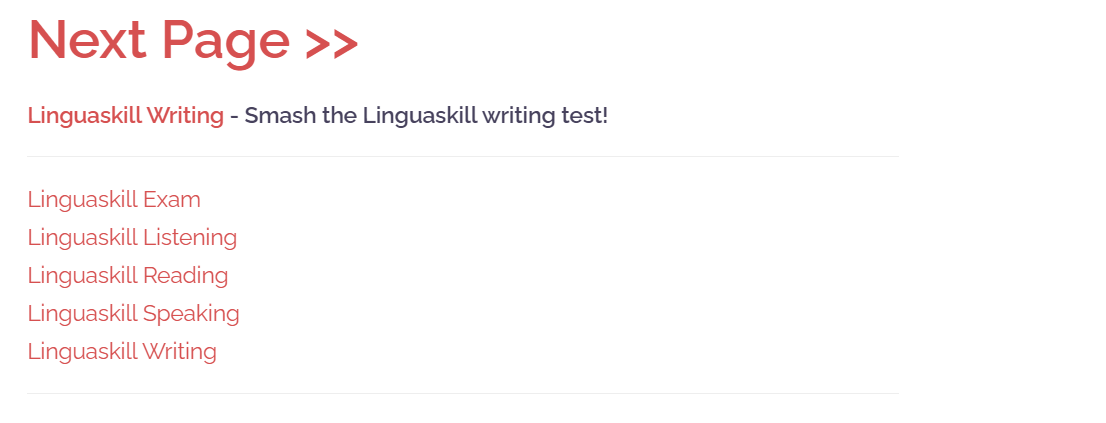
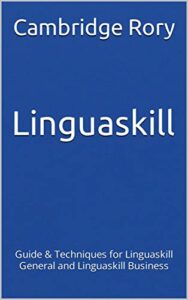
2 thoughts on “Linguaskill Speaking”
Came for the prep, stayed for the BeeGees
Haha, yeh, classic Bee Gees